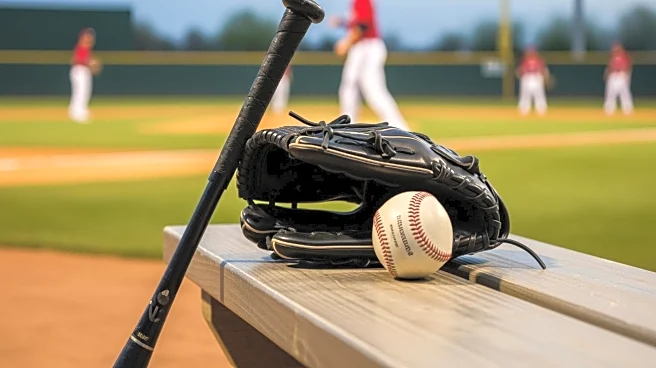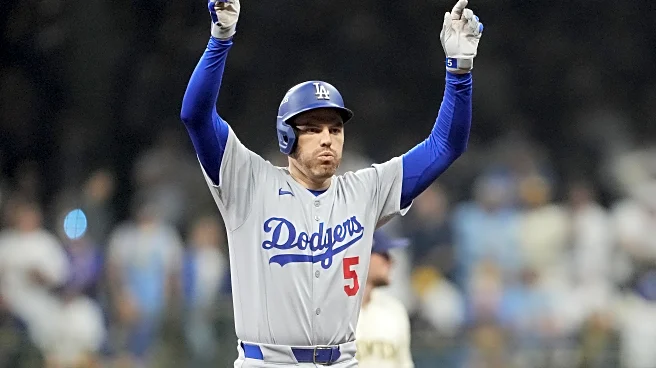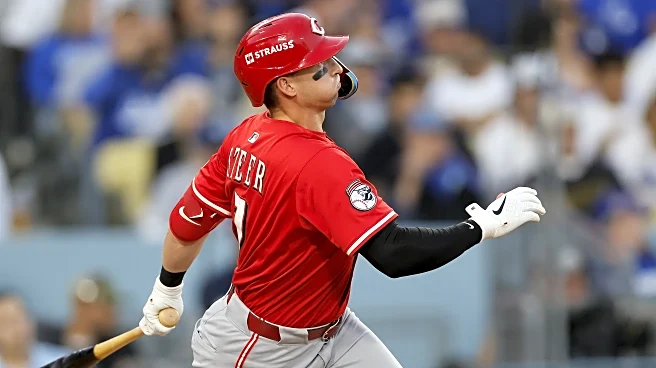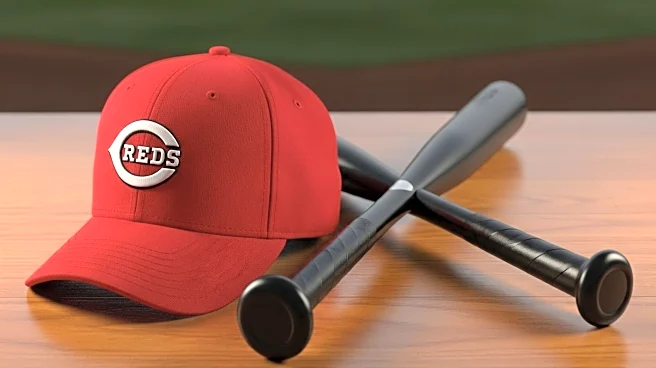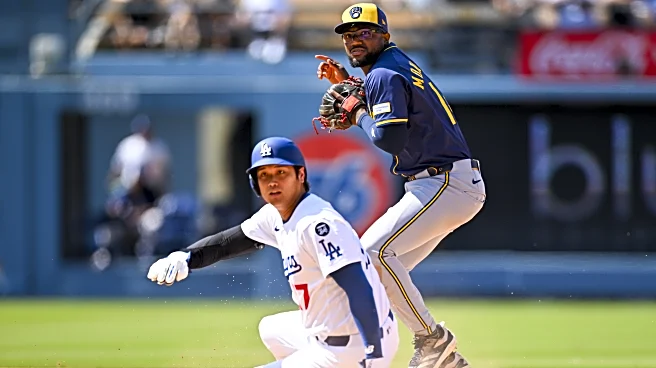What's Happening?
The Cincinnati Reds are prioritizing drafting, developing, and signing their own players rather than pursuing high-end starters in free agency. This strategy is driven by financial limitations and the less attractive playing environment at Great American Ball Park. The Reds aim to build a successful team through internal resources, with Hunter Greene being a key example of this approach. Greene, who was developed into an ace after being selected with the second-overall pick, has been signed to a team-friendly six-year, $53 million contract. Despite speculation about potential trades, Reds General Manager Nick Krall has not confirmed any plans to trade Greene, emphasizing the importance of building the team around him.
Why It's Important?
This strategy reflects the challenges faced by small-market teams in Major League Baseball, where financial constraints limit the ability to compete with larger market teams in free agency. By focusing on internal development, the Reds hope to emulate the success of teams like the Brewers, Rays, and Guardians, who have thrived despite similar limitations. The approach could impact the team's competitiveness and fan engagement, as trading key players like Greene might alienate the fan base. The Reds' ability to develop and retain talent will be crucial in maintaining competitiveness and fostering long-term success.
What's Next?
The Reds will continue to focus on their internal development strategy, with potential implications for their roster decisions in the upcoming seasons. The team's management will need to balance financial constraints with the need to remain competitive, possibly leading to more emphasis on scouting and player development. Fans and stakeholders will be watching closely to see if this approach yields positive results, particularly in terms of team performance and player retention.
Beyond the Headlines
The Reds' strategy highlights broader issues in MLB regarding the disparity between small and large market teams. It raises questions about the sustainability of competitive balance in the league and the effectiveness of current revenue-sharing models. The team's reliance on internal development may also influence other small-market teams to adopt similar strategies, potentially reshaping the landscape of player acquisition and team building in baseball.




